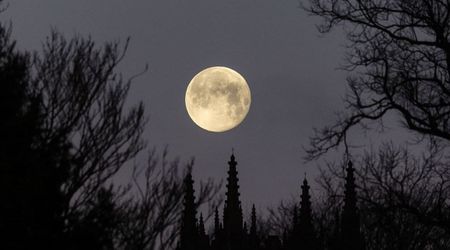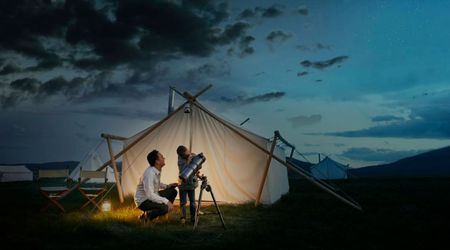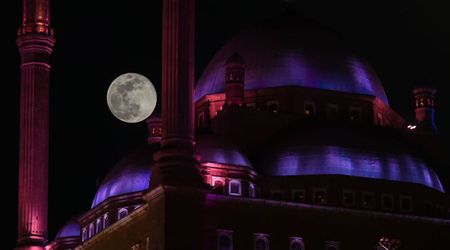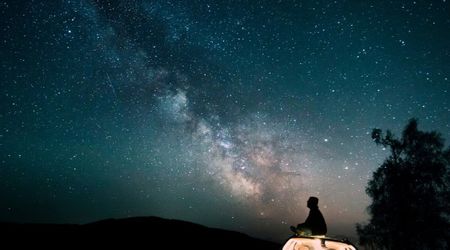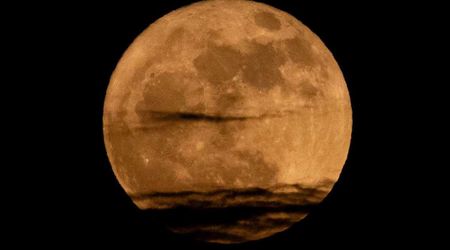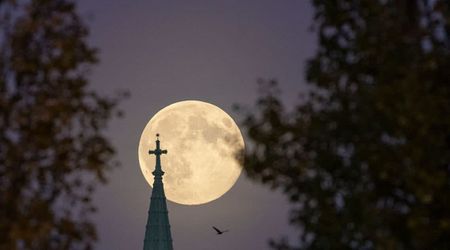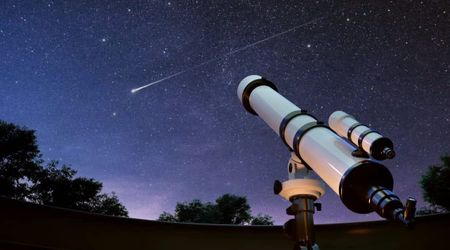What is the Zodiacal Light?

The zodiacal light, also known as “False Dawn” is a triangle-shaped faint glow that can sometimes be seen shortly after sunset or before dawn depending on the time of the year. This cone of white light is visible from Earth although it is not produced by our atmosphere. This in fact an optical phenomenon that originates from a region of space between the Earth and the Sun. The zodiacal light follows the path taken by the Sun along the ecliptic and its size can sometimes stretch up to more than halfway to the Zenith. The constellations of the Zodiac also lie along the ecliptic, which is why this ghostly glow is called the zodiacal light.

A picture of the zodiacal light taken in Argentina by Luis Argerich
What causes the zodiacal light to happen?
For a very long time, scientists believed that this natural astronomical phenomenon was caused by the zodiacal dust cloud. This cloud of interplanetary cosmic dust can be found wading through the space between the planets of the solar system along the ecliptic. It is made of very small particles, (the size of grains) originating from the collisions between asteroids and comets. When sunlight goes through the zodiacal dust cloud, the light rays are reflected and scattered around, which results in the triangle-shaped glow we can see on Earth. The first observations of the zodiacal light were made more than 300 years ago by French astronomer Giovanni Domenico Cassini.
Recently, the scientists at NASA posited a new theory for the origin of the zodiacal light. During its journey between Earth and Jupiter, the spacecraft Juno detected dust grains smashing onto its solar panels. Further analysis revealed some information about the origin and orbital evolution of the dust: Mars, the dustiest planet in the solar system. It is possible that dust grains escaped from the Red Planet during global dust storms.
These new findings were first shared on November 11, 2020, in the following article: “Distribution of Interplanetary Dust Detected by the Juno Spacecraft and Its Contribution to the Zodiacal Light”
When and where can you see the zodiacal light?
So we know that the dust particles from the zodiacal cloud are orbiting around the Sun along the ecliptic plane. This means that the zodiacal light appears to follow the Sun as it sets on the horizon. As the night sky slowly darkens, the zodiacal light appears progressively brighter to an observer over a two-hour period after sunset. As the Earth rotates on its axis, the column of light disappears below the horizon.
The zodiacal light is rather faint to the naked eye, just like the milky way. To get the best view, you will need to find a dark spot with no light pollution whatsoever.
The best time to see the zodiacal light from the northern hemisphere:
- On the western horizon after sunset during spring (from March through May).
- On the eastern horizon before dawn in the fall months (August through November).
The best time to see the zodiacal light from the southern hemisphere:
- In the eastern sky, after sunset, from August to November.
- In the western sky, before sunrise, from March to May.
It is recommended to choose a moonless night to attempt this observation, so preferably during the new moon, or the third-quarter phase since the moon doesn’t rise until very late in the evening.
For those lucky enough to live in the equatorial regions, this elusive pyramid of light can be observed all year round and is said to look larger and more impressive than in the northern or southern night sky
How to photograph the zodiacal Light
This optical phenomenon is an excellent photographic subject appreciated by many night sky photographers around the world. If you want to try to capture the zodiacal light yourself, follow our tips below:
- Plan to go out at night when the weather is clear of clouds and the moon does not rise until very late.
- Choose a very dark area with no light pollution.
- Find a good vantage point where the horizon is clear of any tall structure (mountains, trees, etc).
- Use an astronomy app such as PhotoPills to plan your scene.
- Set up your DSLR camera onto a steady tripod in order to keep it balanced.
- Points your DSLR towards the sunset and plan your composition, try to frame the light pillar the way you want. (It’s often in the middle of the field of view).
- Set your ISO to 1600 and exposure time to 15 seconds (that should be enough to avoid star trailing).
- If you’re happy with the result, you may want to capture multiple subs in order to stack them later in the post process. Stacking images is a great way to reduce noise.
To give you an idea of what to expect, and how beautiful this phenomenon is, watch this short movie by Adrien Mauduit.
https://youtu.be/UoWYWJmTdB4Zodiacal light image gallery
Click on the credit links to see a higher resolution version of the images.

A picture of the zodiacal light taken in New Zealand by Ben

Image credits: Willi Winzig
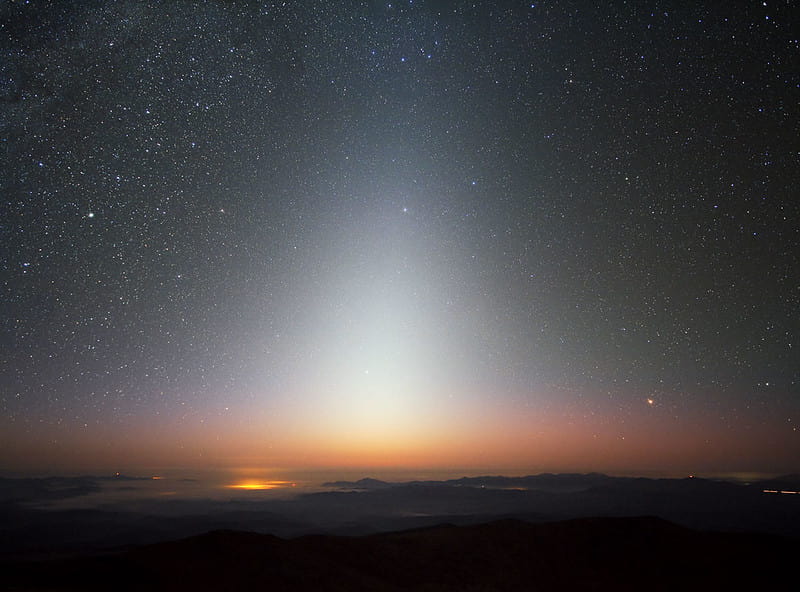
The zodiacal light from Chile. Credits: ESO
Have you ever had the chance to witness the zodiacal light? Let us know your experience in the comment section.
If you'd like to share your picture in the above gallery, let us know and we will happily add your image.

Welcome to StarLust.org
Hey! I'm Tom Urbain, the founder of StarLust.org. I've been fascinated by space and astronomy from a very young age. When I'm not watching space-themed documentaries, movies or TV series, I spend most of my free time in my backyard admiring the planets and galaxies with my telescope.
Recommended Reading
Why does the Moon sometimes appear to change colours?Everyone knows that the Moon is mostly gray. However, if you look closer, there may be a few other different shades up there.
Blood Moons: When the moon turns redThe moon that we are most familiar with is white in color. However, it sometimes takes on a majestic red appearance… Here’s why.
